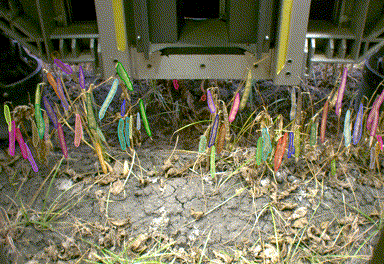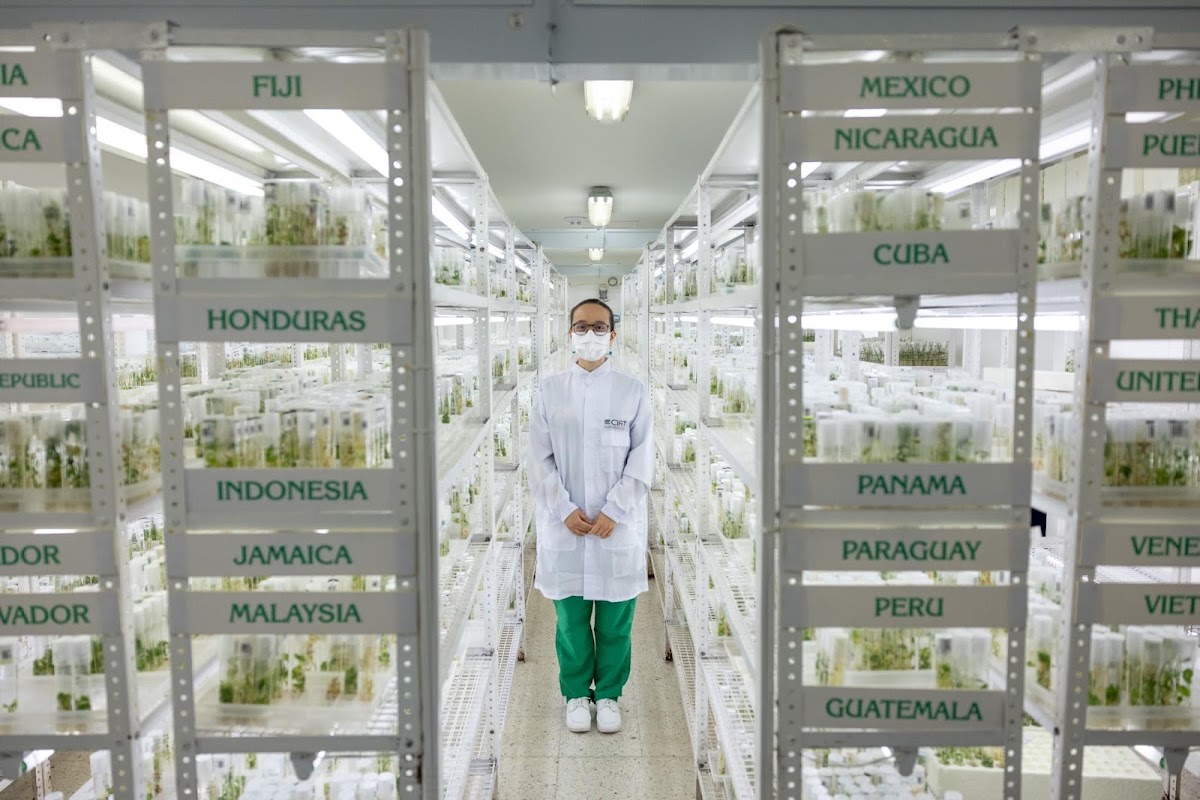Mineral and the beanstalk
Elliott GrantFounder, CEO
| 5 min read
Unlocking the hidden magic of the world’s largest bean collection
In the old English fairytale, Jack and the Beanstalk, a poor boy trades a cow for magic beans that ultimately help him defeat a marauding giant. It’s a reasonable parable of agriculture today. The giant is the climate crisis, the cow is our unsustainable demand for animal-based protein, and the beans are… well, they’re beans.
As a kid growing up in London, I ate a lot of baked beans. What I didn't appreciate at the time is that they actually are quite magical. They’re highly nutritious — packed with nearly as much protein as beef in some cases. They’re natural nitrogen-fixers, boosting soil health and reducing the need for artificial fertilizers. From Colombia to the Congo, they can be grown all over the world, and will likely be a big part of feeding the world more sustainably.
Despite the essential role beans could play in our diets, we know very little about them. Modern farming practices mean that we grow and eat just a handful of varieties out of the thousands that exist. This lack of biodiversity leaves our food supply vulnerable to pests, diseases and a changing climate. As farmers worldwide battle to adapt to higher temperatures, severe droughts, weaker soils and shorter growing seasons, the race to find more productive and climate-resilient crop varieties is only becoming more urgent.
As farmers worldwide battle to adapt to higher temperatures, severe droughts, weaker soils and shorter growing seasons, the race to find more productive and climate-resilient crop varieties is only becoming more urgent.”
Mineral’s mission is to develop new technologies that can help scale adoption of sustainable agriculture globally. Beginning in 2021, we’ve been working with the Alliance of Bioversity International and CIAT, a non-profit agricultural research organization, to accelerate their work to understand and uncover hidden crop traits within the world’s largest bean collection. The Alliance's team has been using Mineral’s technologies at their newly opened Future Seeds genebank in Colombia, which contains over 36,000 varieties of beans. The hope is that what the Alliance discovers with Mineral’s tools can be used to grow better beans for the world, faster.
An Alliance team member manually counting the number of beans in a bean pod
The hope is that what the Alliance discovers with Mineral’s tools can be used to grow better beans for the world, faster.”
Helping solve the phenotyping bottleneck with "Don Roverto"
Genebanks like Future Seeds work to protect humanity’s precious crop biodiversity — sourcing, preserving, curating and studying thousands of different crop varieties. The challenge genebanks face, however, is that it can take decades to discover critical traits and varieties within their collections. In fact, it took the Alliance nearly 30 years just to find the last drought resistant bean variety. This is because tracking the characteristics of plants and how they respond to their environments — a process called phenotyping — is slow, manual and specialized.
Today, when most researchers phenotype plants, they carefully walk through fields, marking different plant traits with a notebook, pen and ruler. But imagine trying to eyeball how many beans are in a bean pod, or how long the leaves are or how many flowers have blossomed. Now imagine doing that for thousands of plants, every week by hand, in the heat of summer. That’s the phenotyping bottleneck.
To help with this challenge, Mineral has been giving the Alliance's researchers tools to help them run more experiments and discover more crop traits. Throughout 2021, Mineral’s rovers — nicknamed “Don Roverto” by the local team — have been gently rolling through the test fields outside Future Seeds, capturing imagery of each bean plant and using machine learning to identify traits such as leaf count, leaf area, leaf color, flower count, plant count and pod dimensions. The rover does this continuously for every plant in the field, and knows exactly where each plant is so it can return a week later and report back on how the plant’s doing.

The Mineral rover uses machine learning to instantly detect important crop traits such as plant size, leaf color, or flower count.
Alliance researchers say the rover is already enabling them to measure crop traits with far greater speed, frequency and accuracy than has been possible before. For example, they can now see how a bean plant is flowering — which can help them better understand how it will cope and continue to reproduce in response to different environmental stressors, like hotter temperatures and droughts. Previously, it was nearly impossible for researchers to track this because the different components of flowering are so subtle. Now researchers can capture flowering as it’s happening.

Inside the Alliance's genebank, which contains the world’s largest collection of beans
Sharing what we learn with the world
A single gene in a rare bean variety has the potential to make the difference between an abundant harvest and a climate-induced calamity in a given part of the world. Mineral hopes to help accelerate the Alliance's ability to find those varieties — as well as share the information it uncovers for other organizations to access too.
The Alliance is a member organization of CGIAR, which alongside the Crop Trust, operates 11 genebanks globally. As part of CGIAR, the Alliance has a charter to make their research freely available so that others, be they a bean breeder in Kenya or a farming cooperative in Peru, can harness it too. That’s why the plant trait data collected by the Mineral rovers at Future Seeds will be made easily and freely available through databases like CGIAR’s GARDIAN and the Crop Trust’s GENESYS platform.
For now, Don Roverto is still out in the fields, collecting data on different bean crops and improving every day. But what it’s learning now could eventually help it go on to better map and understand different crops across a variety of CGIAR’s genebanks. The search for beans, in all their hidden magic, is hopefully just the beginning.
If you’re a genebank or another organization interested in partnering with the Mineral team, you can reach out to us here.